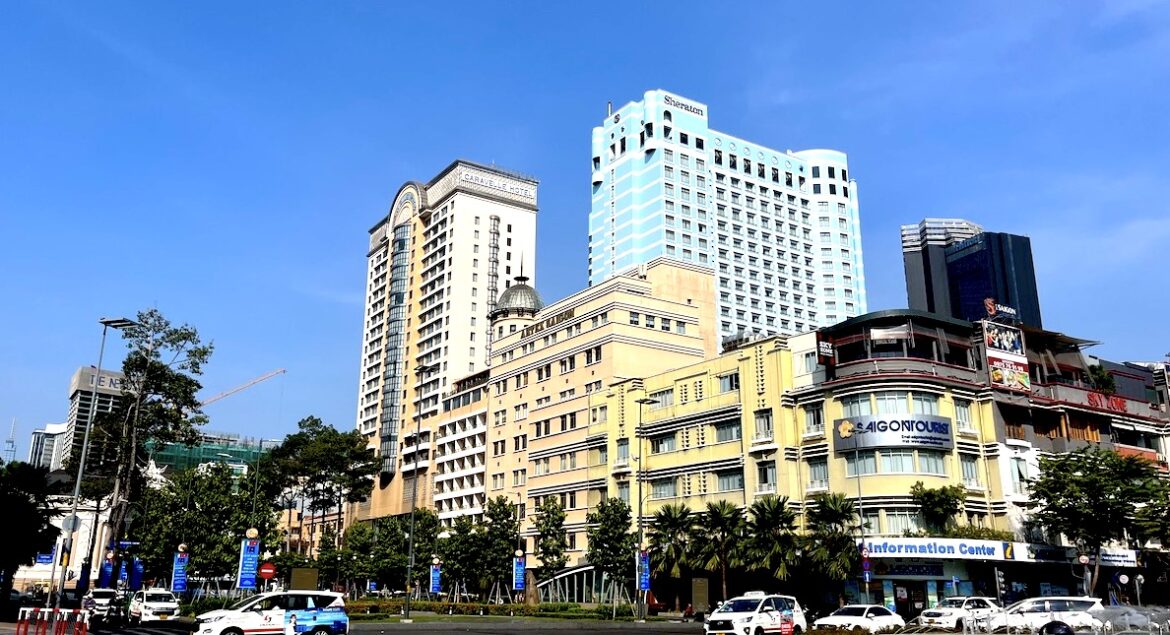If you’re planning a visit to Saigon, chances are pretty good you’re going to walk right by the Caravelle Hotel. It’s at the dead center of the city and adjacent to city hall and the symphony. That location isn’t an accident. You need deep pockets to acquire that kind of real estate. Caravelle’s original investors were partnered with Air France, the Australian government, and the Catholic Church for the hotel’s construction. Pockets don’t get much deeper than that.
When it opened on Christmas Eve 1959 the Caravelle Hotel’s 10 floors made it the tallest building in Vietnam. The elegant rooftop bar afforded views for miles in every direction around the pancake-flat Mekong Delta.
Search Expedia: Discount Hotels Near the Caravelle
Air France operated on the ground floor while the Australians bought the seventh floor outright. They used it to house their country’s embassy in Vietnam. Soon after opening the hotel was popular with foreign press. It hosted personnel from the AP, UPI, Reuters, Time Magazine and Agence-France Presse among others. After the war began all three US television networks had bureaus living and working at the Caravelle.






Where’s the Money? This site may contain affiliate links. Many travel sites include such links to earn a commission at no cost to readers.
Caravelle Hotel During Wartime
It’s not hard to imagine how heady days were at the Caravelle Hotel during the war. Intrepid reporters and photographers went into the field daily, showing Americans the horrors of war on television. Each night they beat a retreat back the Caravelle to dine and drink on expense accounts. At that time an observer could watch the bombing runs from the rooftop.
Morley Safer was one of the residents at the Caravelle Hotel in those days. He won an Emmy for revealing that the government’s official account of events at the Gulf of Tonkin was untrue. Safer wrote at length about the experience in his memoir of the period,


















